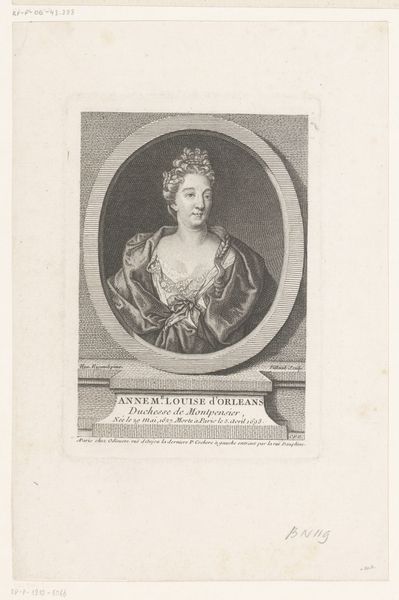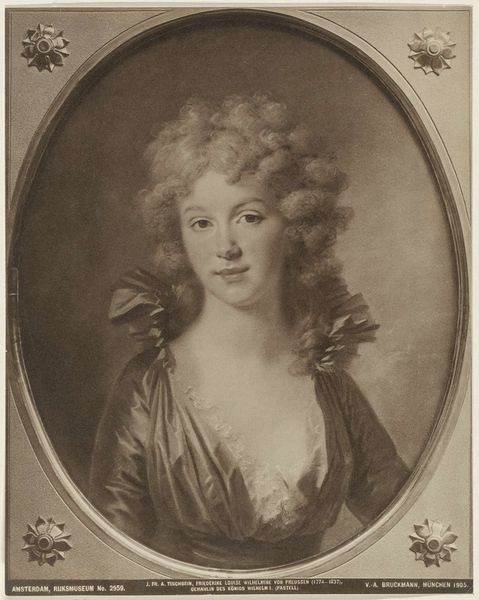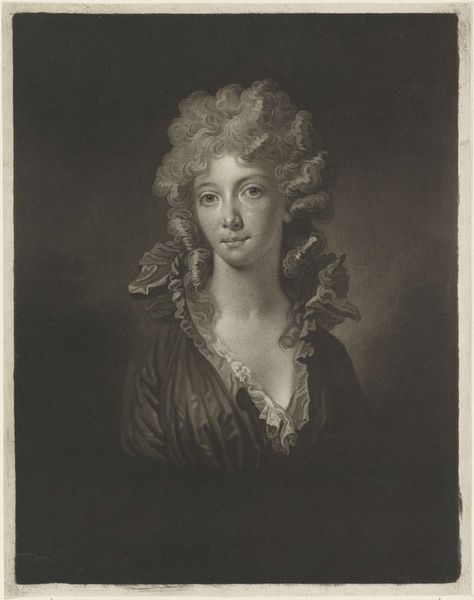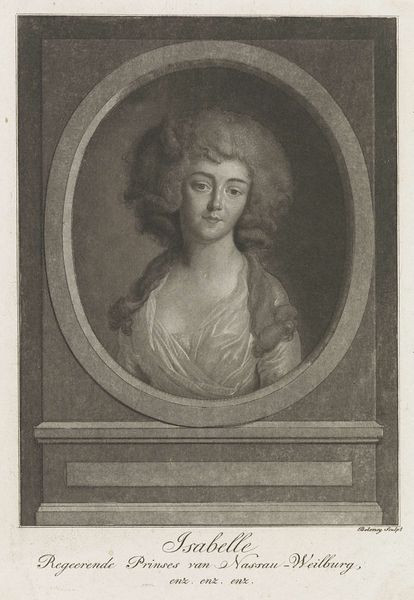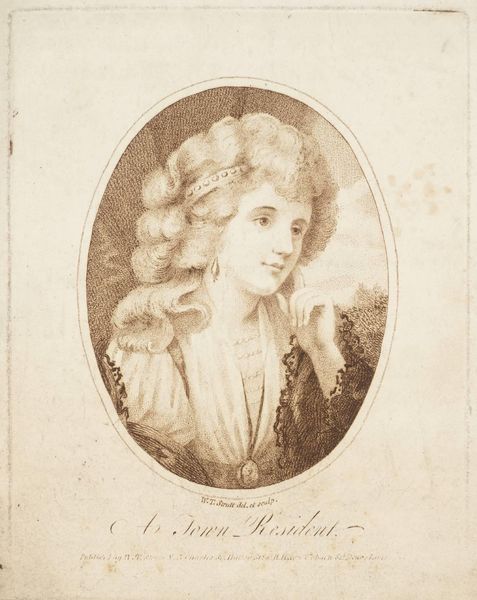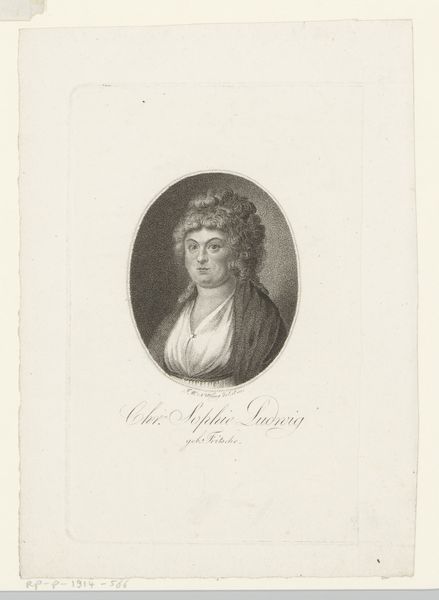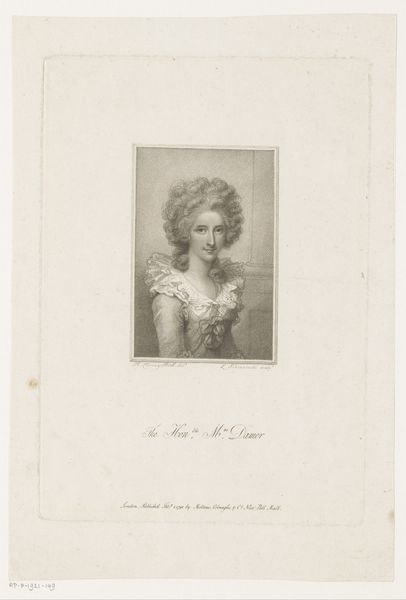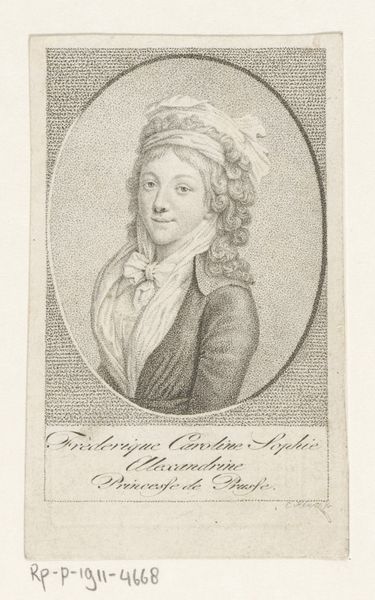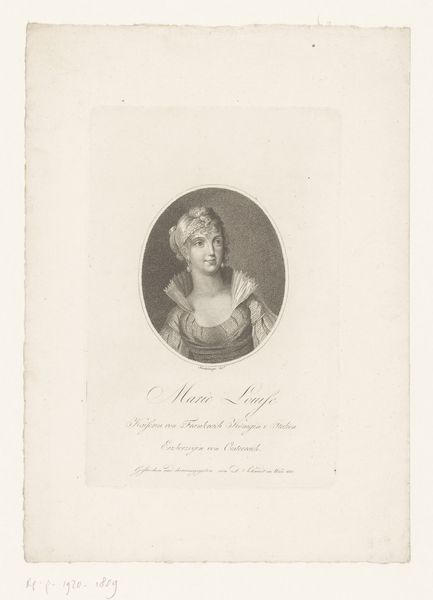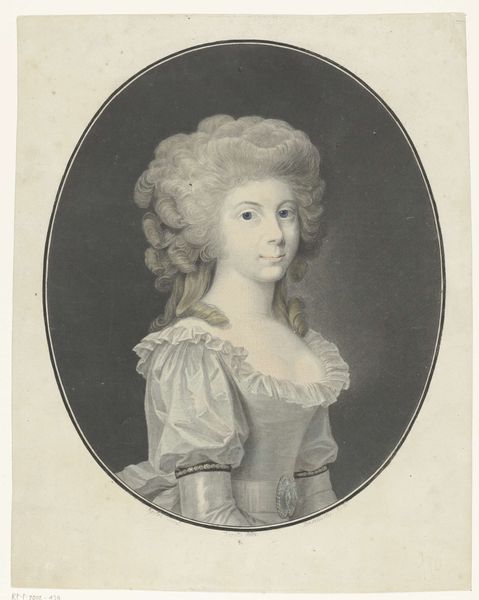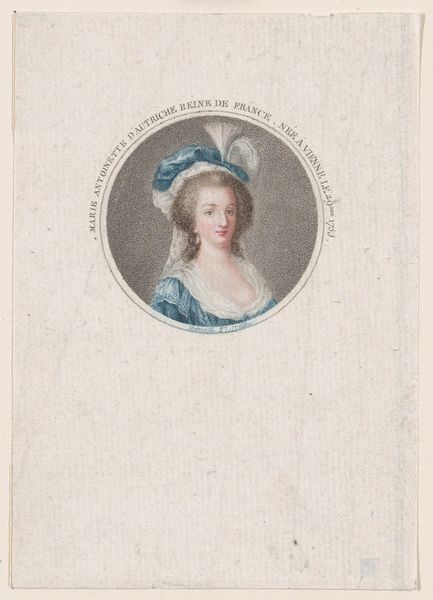
print, engraving
#
portrait
#
neoclacissism
# print
#
old engraving style
#
19th century
#
engraving
Dimensions: height 225 mm, width 170 mm
Copyright: Rijks Museum: Open Domain
Curator: Before us we have an engraving from the period 1790-1849, titled “Portret van Wilhelmina van Pruisen.” Editor: It possesses a quiet formality, doesn’t it? The meticulous rendering in monochrome enhances the subject’s refined dignity, framed within its neoclassical border. Curator: Absolutely. Given it's a print, we have to consider the social context of reproducible images. This print allowed for a wider dissemination of Wilhelmina's image and, consequently, her symbolic power. Editor: I see what you mean, and that has formal consequences: the artist pays acute attention to the crispness of line and form. Notice the precision with which the hair is depicted, each strand a deliberate mark creating the illusion of volume and texture. Curator: And that fabrication relied heavily on the engraver’s labor. Each line was meticulously etched, suggesting a network of workshops and collaborative efforts behind even this single image. It blurs the lines of 'high art' by pointing to production means. Editor: True. Yet, consider how the oval frame draws our gaze into the sitter's gaze; the tight crop forces an intimacy, as though one were afforded a private audience with royalty. This artistic construction undeniably elevates the Princess. Curator: However, by focusing on the conditions under which the print was made and distributed, we realize this was also an exercise in manufacturing consent, in stabilizing the Prussian monarchy. The work then transcends the mere depiction to perform active social labor. Editor: Yes, both things at once, always! The artist uses visual language to ennoble their subject; whether it reflects propaganda purposes is part of a grander puzzle, a dance between form and its cultural consequences. I note how successfully the formal constraints capture the aesthetic ideals of the era, while acknowledging that material accessibility meant broader viewership, and therefore a potentially more manipulative function. Curator: So, a constant back-and-forth between surface appeal and its instrumental underpinnings. Very well put! Editor: Indeed! It's always satisfying when historical context and pure formalism shake hands, revealing that, after all, they've been dancing together all along.
Comments
No comments
Be the first to comment and join the conversation on the ultimate creative platform.
